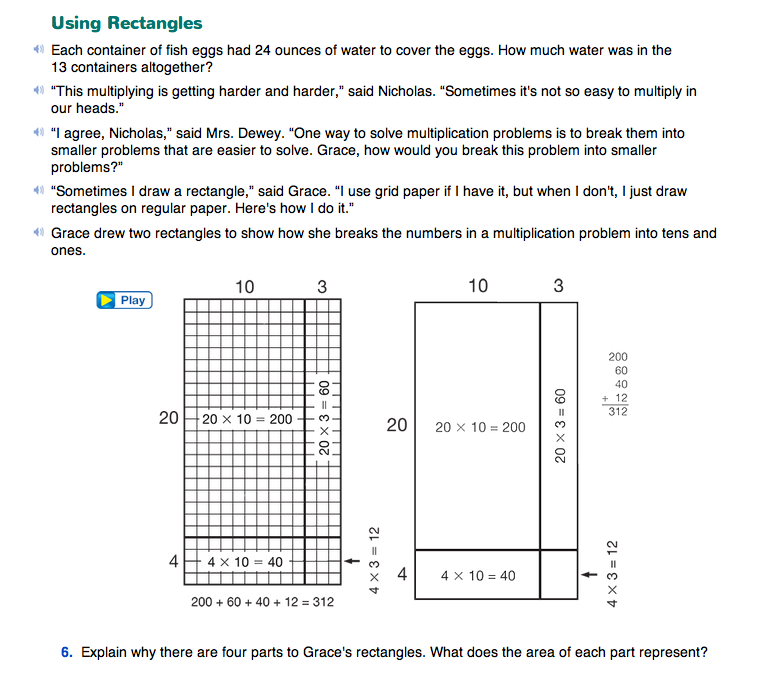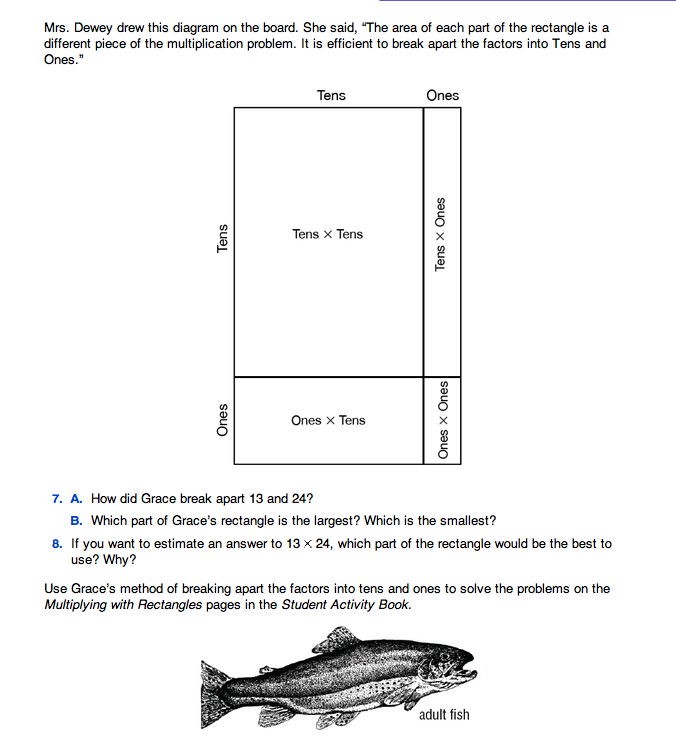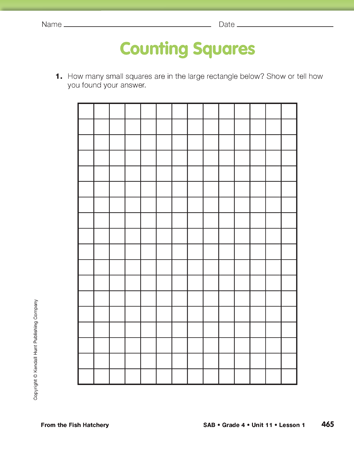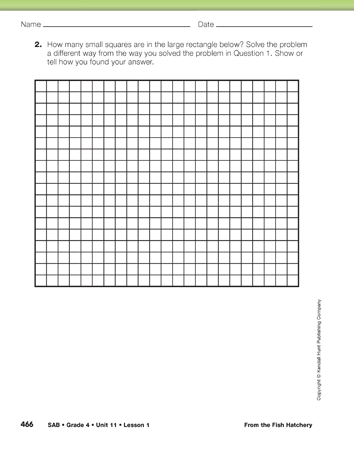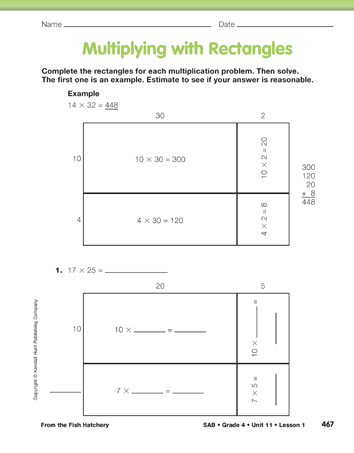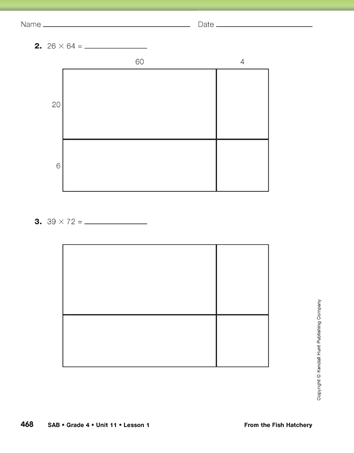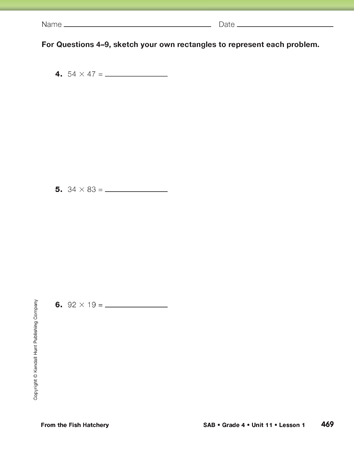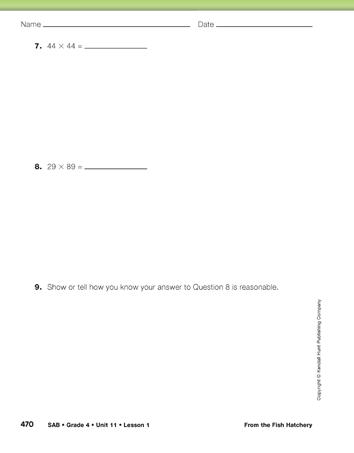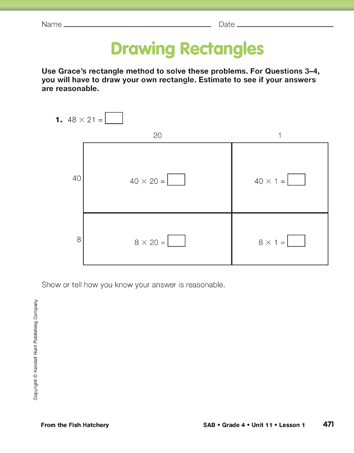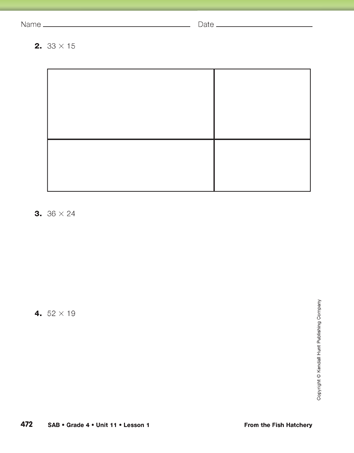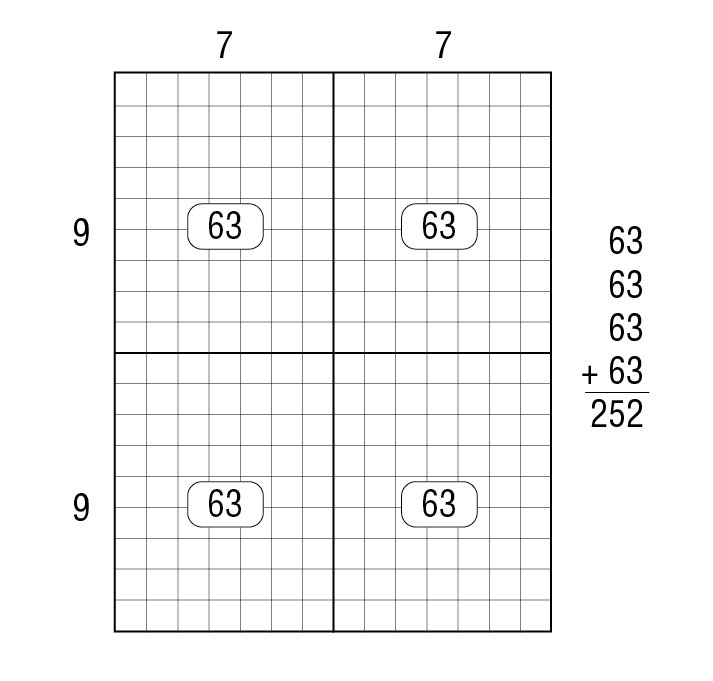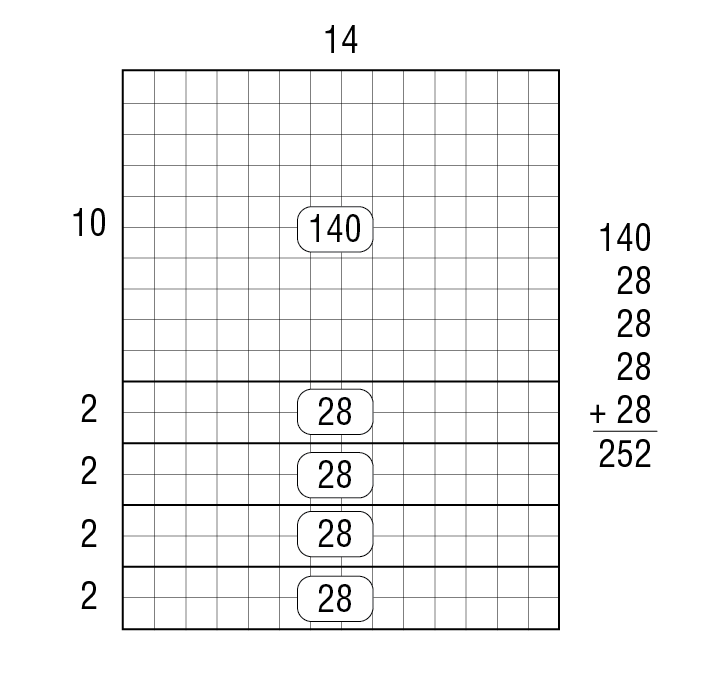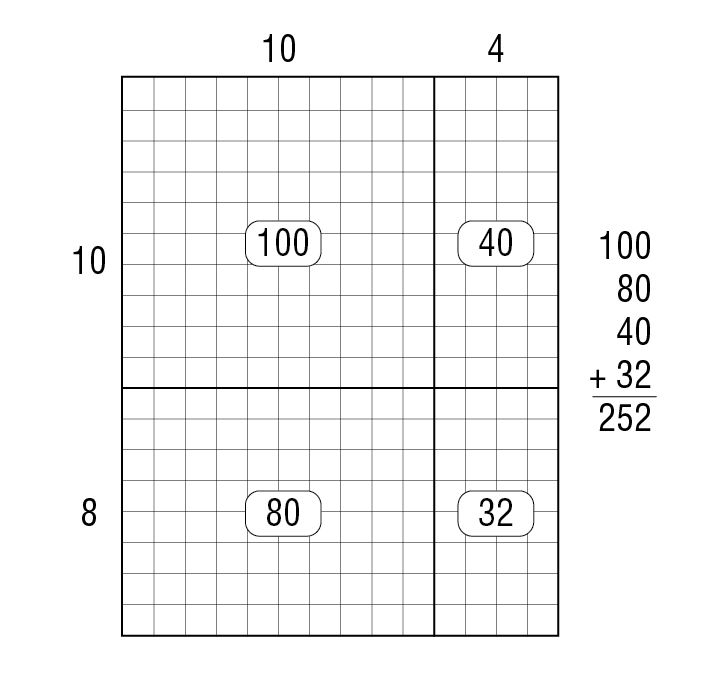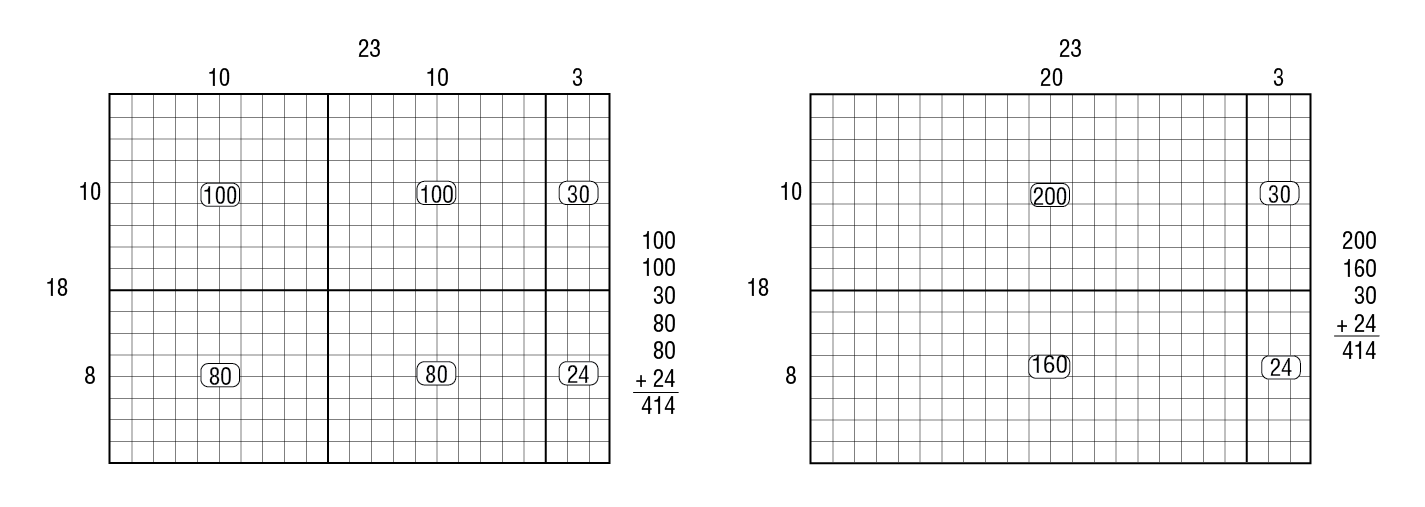From the Fish Hatchery
Est. Class Sessions: 2Developing the Lesson
Part 2: Using Rectangles
Model Counting Squares. Display Question 1 on the first page of the Counting Squares pages in the Student Activity Book. Direct students to find the number of small squares in the rectangle for Question 1.
Ask:
Allow students several minutes to solve the problem. Remind them to show their method. Pay attention to the strategies students use. Ask them to share how they figured the total number of squares in the rectangles. Make sure you include a student who solved the problem by partitioning the large rectangle into more manageable parts. Sample student responses for Question 1 are shown in Figures 3, 4, and 5.
Ask questions such as:
If students do not offer the solution in Figure 5, ask:
Ask a student to show how to divide the rectangle into tens and ones on a class display of the first Counting Squares page. Then explain the partial products.
Explore Ways to Count Squares. Ask students to complete Question 2 on the Counting Squares pages using a different method for dividing up the rectangle from the one they used for the previous problem. If students are having difficulty thinking of new methods on their own, suggest that they try one of the methods that was shared for the previous problem. After giving students several minutes to solve the problem, ask them to explain to a partner how they solved the problem. Then ask two or three students to explain their strategies to the class. Continue recording students' methods on a class display of Counting Squares Question 2 as different methods come up. Sample solutions that use place value are shown in Figure 6. Ask a student to show the class how to divide this rectangle into tens and ones.
Ask:
Using Rectangles. The vignette in the Using Rectangles section of the Student Guide begins the discussion of solving multidigit problems using paper-and-pencil methods.
A new multiplication problem is presented:
Discuss the two rectangles drawn by Grace.
Ask:
When students are familiar with using rectangles to show break-apart products with tens and ones, have them work in pairs or small groups to answer Question 6 and discuss the vignette that follows in the Student Guide.
Ask pairs to work on Questions 7 and 8. Question 8 leads students to consider a method of estimation that flows from the rectangular array model. Students may respond that an estimate of 200 is not very close when the actual answer is 312. This model presents a visual demonstration of why the estimate is low (much of the product comes from the other three partial products).
Ask students to complete the Multiplying with Rectangles pages in the Student Activity Book. As they solve the problems, have them compare partial products and answers with others in their small groups. Circulate as they work to see if students are able to extend their understanding of the rectangle model to 2-digit by 2-digit problems.
At this point, you may assign the Drawing Rectangles pages in the Student Activity Book as homework. Unfinished problems from the Multiplying with Rectangles pages in the Student Activity Book may also be assigned as homework.













